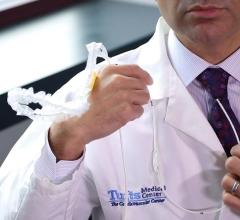March 23, 2020 — As the novel coronavirus (COVID-19, SARS-cov-2) continues to spread, the Society for Cardiovascular ...

March 20, 2020 — The Centers for Medicare and Medicaid Services (CMS) announced March 18, 2020, that all elective ...
An interview with Ehtisham Mahmud, M.D., FSCAI, chief, Division of Cardiovascular Medicine, executive director of ...
Providing exceptional cardiovascular care for patients to achieve the best possible outcomes is the number one goal for ...
This is a quick overview of clinical data on the novel coronavirus (COVID-19) as of March 17, 2020. It offers a brief ...
March 17, 2020 — The Trump Administration today announced expanded Medicare telehealth coverage that will enable ...
Interview with Thomas Maddox, M.D., MSc, FACC, the chairman of the American College of Cardiology (ACC) Science and ...
Cardiac positron emission tomography (PET) is growing in popularity among cardiologists because it provides the ability ...
Interview with Mike Stone, M.D., an emergency physician at Northwest Acute Care Specialists in Portland, Ore., director ...
March 16, 2020 — The European Society of Cardiology (ESC) issued a statement March 13 recommending in novel coronavirus ...
March 16, 2020 — The Society of Cardiovascular Computed Tomography (SCCT) released a new expert consensus document on ...
When performing radiofrequency (RF) ablation to treat cardiac arrhythmia, medical professionals must balance the safety ...
Interview with Navin Kapur, M.D., FAHA, FACC, FSCAI, executive director, The CardioVascular Center for Research and ...

Philips is working on a prototype cath lab angiographic imaging system that might be able to replace the current X-ray ...

Apple created a stir when it announced in 2018 that its Apple Watch Series 4 was the first consumer health and fitness ...
Change Healthcare Cardiology Hemodynamics is an integrated hemodynamic monitoring system for monitoring vital signs and ...
March 10, 2020 — The U.S. Food and Drug Administration (FDA) has cleared the SynCardia Systems 50cc temporary Total ...

March 10, 2020 — Novel coronavirus (COVID-19) has claimed another large cardiology meeting, the European Heart Rhythm ...

Cardiovascular disease is the leading cause of death for women in North America, and women with heart failure often ...


 March 23, 2020
March 23, 2020












